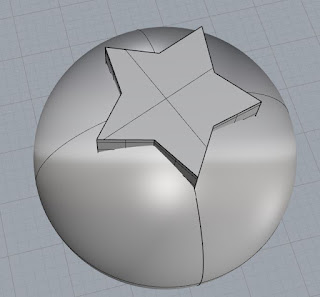For our fabrication test me and Nancy first began to look at how we could create a mold from the foam to be used for glass casting as we are both involved in glass making at ACAD, Nancy in hot glass and me in glass casting.
We then decide to play with the idea of creating food out of glass and settled with the food item of the waffle.
we decided contemplated over square or round waffle ideas
Here is a diagram of the waffle and all the accessories we plan to add onto the available space not covered by the waffle for the CNC template.
Here we created the waffle model by rounding the corners of squares then lofting the squares to create a more organic real waffle look
To create the blueberry we took a sphere then Boolean differenced to with a extruded star + added a small inner sphere.
For the strawberry we revolved a half strawberry silhouette creating a heart like shape, then a half strawberry.
The banana, the simplest of all the fruit is a filleted sides, extruded circle.
We hope to add a butter element and simulate the syrup with melted wax.
Though this piece may a first glance appear quite silly waffles are manufactured breakfast food that has an uncanny grid as the stamp of a machine similar to that of computer aided fabrication processes (ex: the visible lines of 3D printed objects. This then creates an interesting dynamic this waffle will push even greater barriers of food manufacture utilizing CNC technology and molten glass rather than batter to create an industrial breakfast.
















Comments
Post a Comment